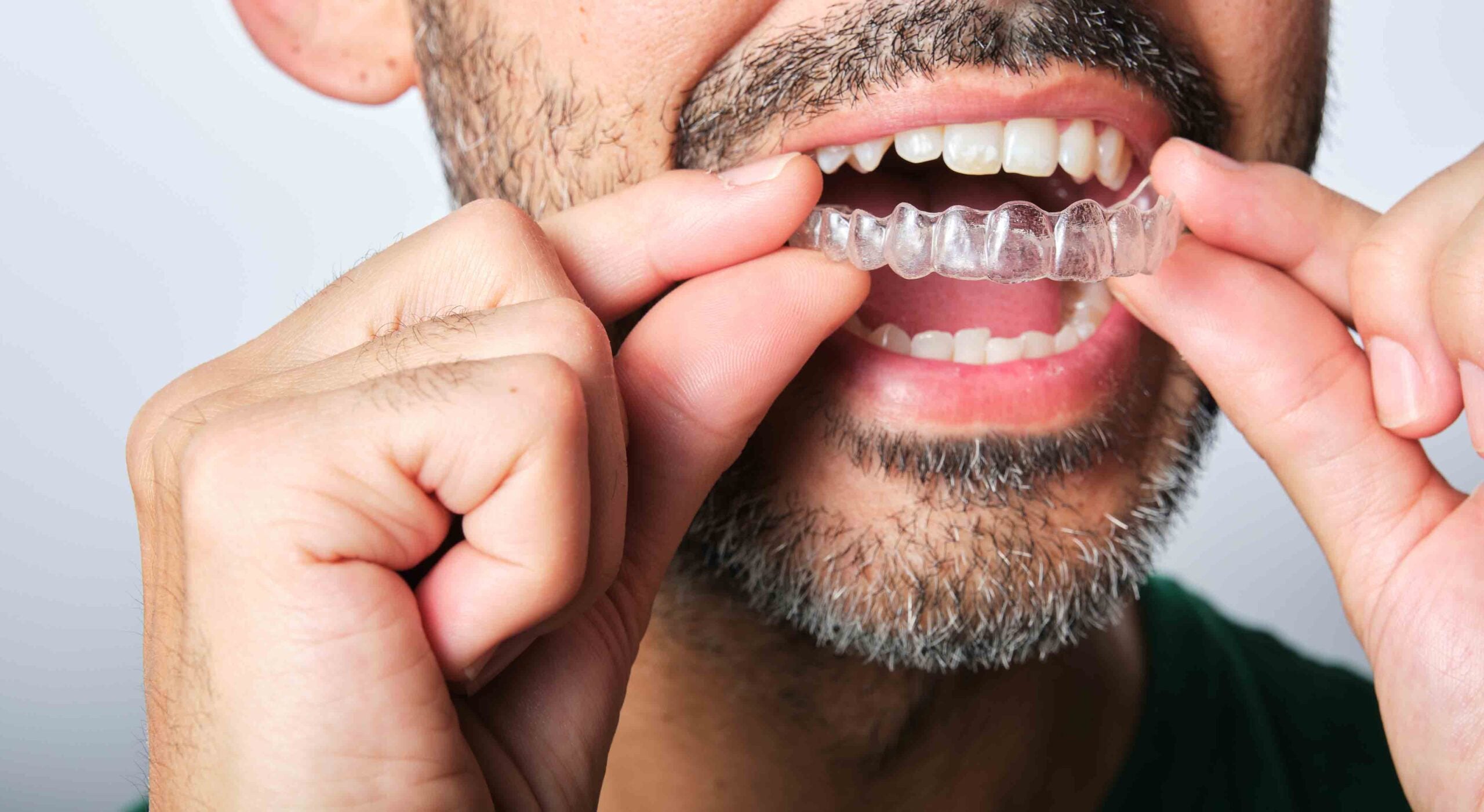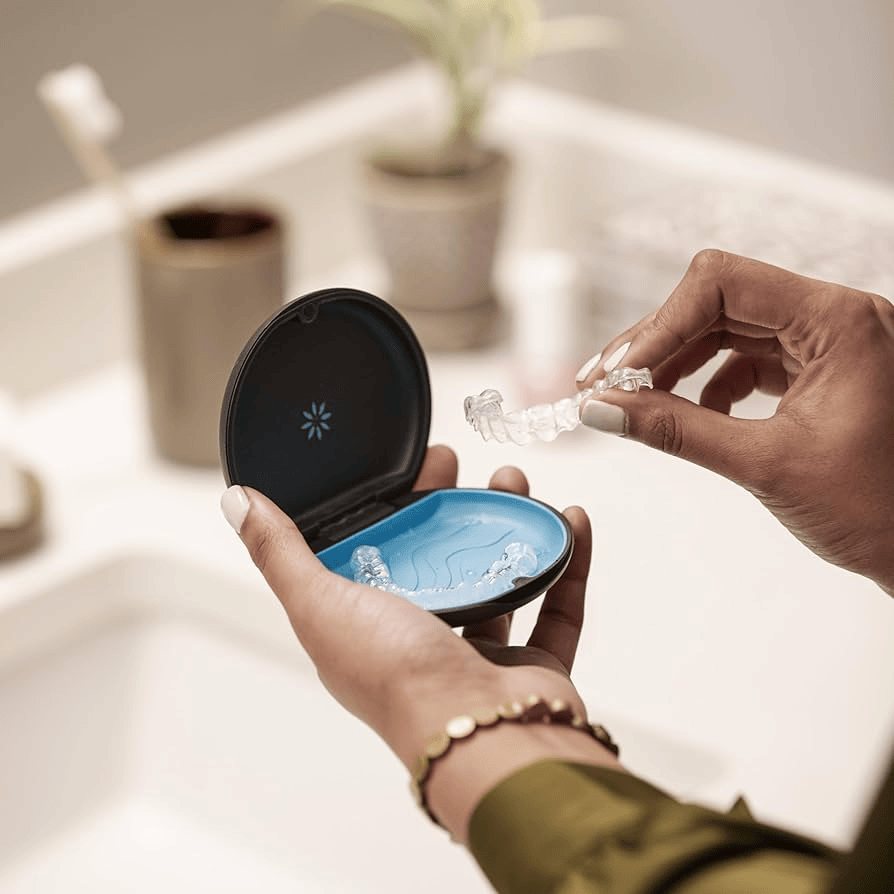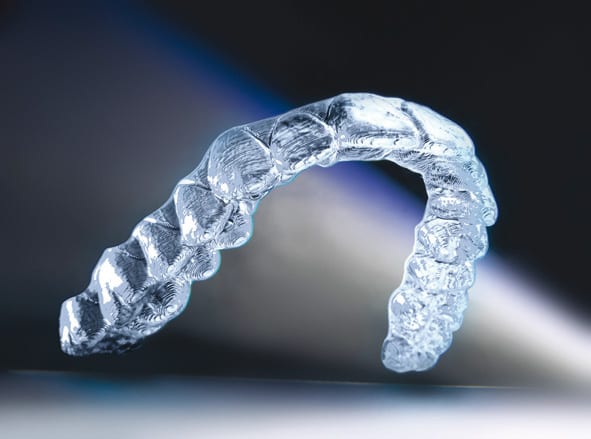If you've ever tried talking with a retainer in, you already know: even the smallest change inside your mouth can sound like a megaphone to your ears. So, if you're wondering "Do clear aligners give you a lisp?"—you're definitely not the only one. Let's talk about what happens when high-tech aligners meet human speech.
Key Takeaways
Clear aligners like Invisalign can temporarily affect speech by causing a mild lisp, especially in the early stages of treatment.
Most lisps are caused by subtle changes in tongue placement due to the thin layer of plastic over the teeth, but they typically fade within a couple of weeks.
Factors like aligner fit, individual speech patterns, and treatment duration can all influence how noticeable the speech change is.
Practicing speech with aligners, using tongue exercises, and allowing time for natural adjustment are effective ways to reduce or eliminate a lisp.
Compared to metal braces, clear aligners offer more flexibility and comfort, and with professional guidance, most patients adapt quickly with minimal long-term impact.
Understanding Clear Aligners
Clear aligners like Invisalign, Smile Direct Club, Byte, and other invisible braces are designed to straighten teeth without the metal and wires of traditional braces. Made from smooth, BPA-free plastic, these aligners are virtually invisible and customized for each patient.
They're popular for a reason: they allow for subtle, convenient orthodontic treatment while still letting users remove the trays to eat, brush, and floss.
Patients typically wear each set of aligners for one to two weeks before moving to the next stage, slowly shifting teeth into place.The appeal? No brackets, no wires, and no major changes to your lifestyle—just a series of trays quietly transforming your smile. But there is a learning curve, especially in the first few days.
Overview of Invisalign Treatment
Invisalign treatment is tailored to the individual using digital scanning and 3D modeling. Once a plan is created, a series of aligners is manufactured specifically for the patient. These trays are engineered to apply precise pressure to targeted teeth, gradually improving alignment over several months. The duration of treatment can vary depending on the complexity of the case, but most patients see noticeable improvements in the first few weeks.
Patients wear the aligners 20–22 hours per day. Removing them only for meals and hygiene is crucial—wearing them less can extend treatment time or reduce effectiveness. Each aligner builds on the last, nudging teeth into alignment with minimal discomfort. It’s high-tech orthodontics that fits into daily life, but still requires discipline.

How Much Does Invisalign Cost?
Invisalign costs vary, but the national average ranges between $3,000 and $7,000. Several factors influence the price, including the length of treatment, the number of aligner sets needed, and your orthodontist’s expertise. Dental insurance may cover part of the expense—typically up to $1,500—especially if it includes orthodontic benefits. Flexible Spending Accounts (FSAs) or Health Savings Accounts (HSAs) can also be used.Some providers, including Diamond Braces, offer payment plans that break the total cost into monthly installments. If you're comparing Invisalign vs braces, you'll find the pricing to be similar, though Invisalign offers more flexibility and fewer office visits for many cases.

How Do Clear Aligners Work?
Clear aligners use biomechanical force to move teeth gradually. Each tray is crafted to fit snugly over the patient’s teeth, applying targeted pressure that guides them into alignment over time. Unlike traditional braces, which rely on metal wires adjusted by an orthodontist, aligners are switched out by the patient themselves—usually every one to two weeks.The process relies heavily on patient compliance: skipping trays, wearing them inconsistently, or failing to follow the treatment schedule can derail progress. And because each tray is slightly different, your mouth constantly adjusts—not just physically, but also in how it functions day-to-day, including speaking. That’s where speech-related side effects may briefly come into play.
What is a Lisp?
A lisp is a speech pattern where certain sounds—most often “s” and “z”—are produced incorrectly, typically with a soft “th” substitution. It happens when the tongue placement during speech is disrupted, often by structural or functional interference inside the mouth.
In the context of orthodontics, that disruption can come from anything foreign: a new appliance, a removable tray, or even post-treatment swelling.
There are several types of lisps: interdental (tongue pushing between the teeth), dentalized (tongue pressing against the teeth), lateral (airflow escaping the sides), and palatal (tongue touching the roof of the mouth). Aligners don’t cause these by design, but they can temporarily.

Connection Between Aligners and Lisp
Do Clear Aligners Give You a Lisp?
For some patients, yes—but it's usually brief. Most people who experience speech changes while wearing clear aligners only notice them in the first few days or weeks. The sensation of having something foreign in your mouth can temporarily alter tongue placement and airflow, especially during “s” and “z” sounds. While it might be distracting at first, the vast majority of patients report that it fades with time and practice.
Why Might a Lisp Occur with Invisalign?
Clear aligners sit flush against your teeth, but they still introduce a thin barrier that can impact articulation. Because speech is all about muscle memory and coordination between your tongue, teeth, and palate, even a slight change in oral topography can throw things off. A lisp tends to show up when aligners interfere with how the tongue contacts the back of the front teeth or the roof of the mouth—prime real estate for sibilant sounds. This disruption can lead to a whistling or muffled "s," which is what many people describe as a lisp.
Invisalign Reddit Discussions
Browse through Invisalign Reddit threads and you'll find stories ranging from mild concern to comic relief. “I couldn’t say ‘successfully’ without sounding like Daffy Duck,” joked one user. Another shared, “I didn’t even realize I had a lisp until I recorded myself on Zoom.” But nearly all agree—it goes away. Most people adjust within a few days to two weeks, and those who speak frequently (teachers, sales reps, performers) often adapt even faster with a bit of practice.
Before and After Stories
Plenty of Invisalign users recall that early lisp with a bit of nostalgia—because it disappeared as quickly as it came. One patient reported struggling with presentations the first week, but found her speech completely normalized by week three. Another said he practiced reading aloud to retrain his tongue and noticed improvement within 48 hours. In both cases, the inconvenience was short-lived, and the confidence boost from a straighter smile far outweighed the temporary hiccup in speech.
Factors That Influence Speech with Clear Aligners
Fit of the Aligner
If an aligner doesn’t fit properly—if it’s too loose, too tight, or uneven along the edges—it can impact how your tongue moves, rests, or contacts the teeth. This can amplify any early speech changes. A snug, accurate fit minimizes that interference. That’s why working with an experienced Invisalign dentist or orthodontist who ensures precision from the start is essential.
Length of Treatment
Your initial speech patterns may be impacted more heavily in the first few days or weeks. Fortunately, the longer you wear aligners, the more your mouth adapts. Shorter treatment plans often come with faster speech adjustment, while longer or more complex cases might require more adaptation time—but either way, most people overcome it quickly.
Individual Speech Patterns
Everyone's baseline speech is different. Someone who already speaks with a softer “s” or slight lisp might notice more change, while others may not detect any difference at all. The shape of your tongue, palate, and teeth all play a role in how aligners influence your sound—and how quickly you adapt.
Do at-home aligners actually work?
When it comes to orthodontic treatment, not all aligners are created equal. Invisalign with iTero Element™ imaging offers distinct clinical advantages over mail-order aligner kits. At-home systems rely on outdated putty impressions and lack the oversight of an experienced orthodontist—two factors that increase the risk of poor fit, compromised results, and even dental complications. In contrast, Invisalign treatment with iTero scanning is designed to be fully supervised, fully customized, and clinically optimized giving you both the peace of mind and the smile you deserve.
Are at home teeth aligners safe?
Without iTero scanning, at-home aligner companies often rely on lower-quality molds and limited diagnostic information. This leads to aligners that may not fit properly causing discomfort, tooth movement errors, or bite issues. Additionally, these companies typically operate without regular in-person progress checks, meaning problems can go undetected until significant damage has occurred. Choosing Invisalign with iTero ensures your treatment is guided by a licensed orthodontist who is trained to monitor your case and make adjustments as needed for optimal results.
Risks of using at-home aligners without iTero technology:
Increased chance of ill-fitting or inaccurate aligners
Lack of in-person clinical supervision throughout treatment
Greater risk of bite misalignment or tooth damage
No real-time progress monitoring or predictive modeling
Conclusion
A skilled Invisalign provider does more than just hand over trays—they monitor your treatment, make refinements, and troubleshoot issues like persistent speech interference. If your lisp isn’t going away or you feel like your trays don’t fit quite right, don’t guess. A dentist or orthodontist trained in clear aligner therapy can adjust your treatment or recommend minor trimming and refinements that can make a big difference.
Does the Lisp Go Away Over Time?
Yes. Most users adjust within the first week or two, and any speech changes typically fade with consistent use and a little practice.
Can I Prevent a Lisp with Clear Aligners?
You can minimize the chance by ensuring a snug fit, practicing your speech early on, and working with a provider who personalizes your aligner design and attachments.
How Do Invisalign Costs Compare to Traditional Braces?
They’re often comparable. Invisalign may be slightly more expensive depending on your provider, but offers more flexibility, fewer office visits, and a clear aesthetic advantage.






